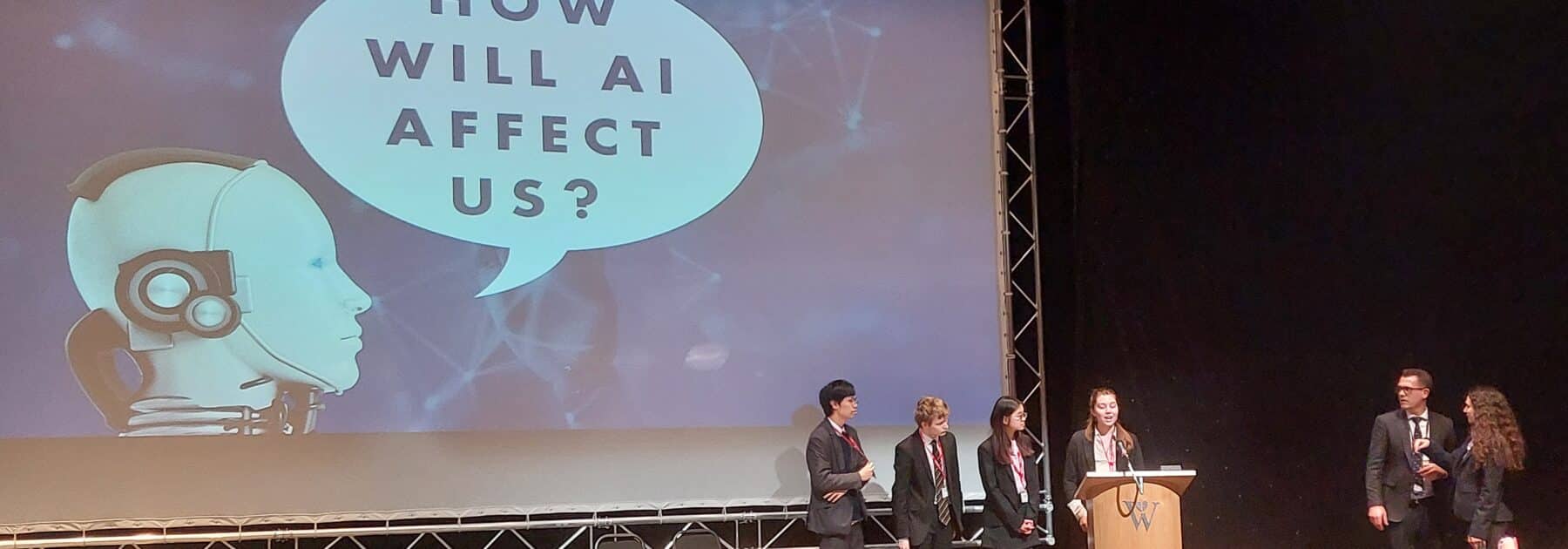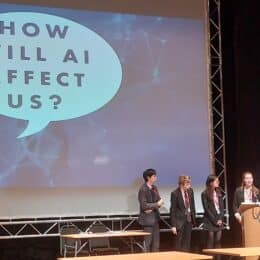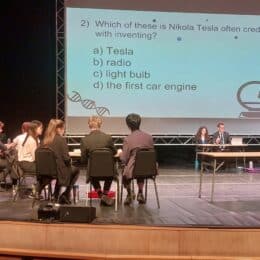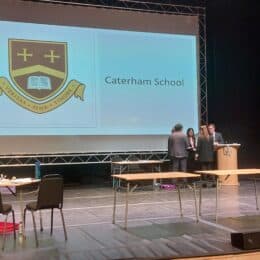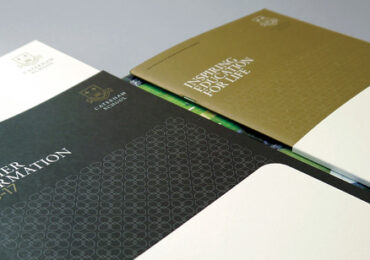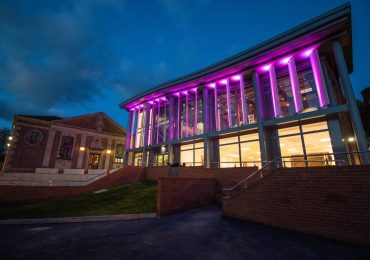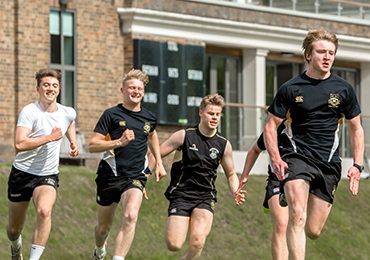Silver at STEM Solutions competition
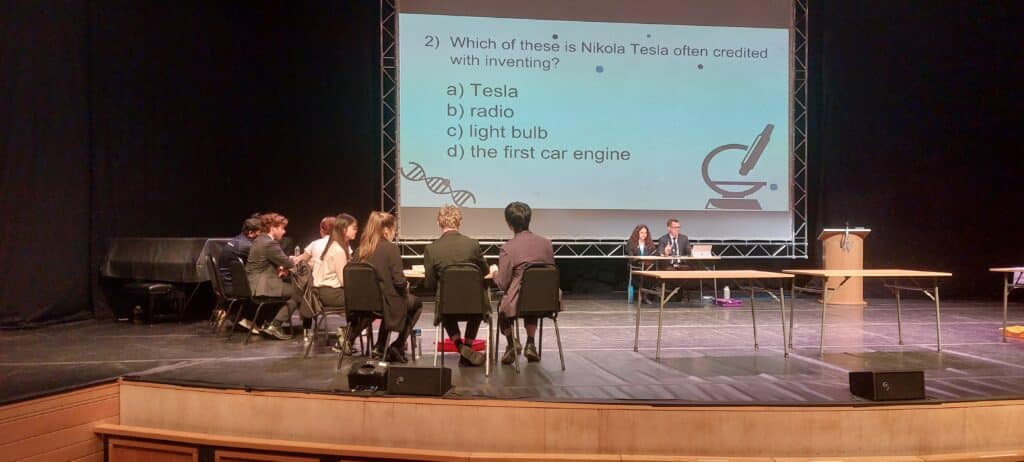 On Tuesday 23 May, four intrepid Lower Sixth scientists headed to Woldingham School for the second annual STEM Solutions competition.
On Tuesday 23 May, four intrepid Lower Sixth scientists headed to Woldingham School for the second annual STEM Solutions competition.
Last year’s event was a fantastic opportunity for our competitors to showcase their problem-solving skills and science/maths knowledge, while also presenting to their peers about a crucial issue facing today’s scientists and those of the future. This year’s competition was another broad church of challenges. Marcus, Sophie, Tiffany and Xavier had spent a while researching the future implications of AI in society and composing a five-minute PowerPoint about their findings, and we always looked forward to our presentation run-throughs and quizzing practice in the weeks leading up to the event. As they, Dr Langdon, and I headed off to Woldingham on Tuesday afternoon, we were cautiously optimistic about our prospects.
Our cautious optimism was well placed.
We got to know the huge Woldingham auditorium and meet the teams from our fellow competing schools (Tonbridge and Sevenoaks, as well as Woldingham) in the final few minutes before the start of the first round. In true University Challenge style, the teams sat behind their own desks (but not on different levels – despite the long-running joke, UC contestants do not sit on different levels of the stage) and awaited their first starter question. Fourteen quickfire multi-choice questions later, we were off to a flying start.
The teams also had to face off with some logic puzzles and a selection of “on the buzzer” questions. Although one competitor mixed up sulfur dioxide with ozone in one question, all four teams had a marvellous time answering everything. My favourite buzzer question was probably the one about the two chemical elements that have been named after US states – one point for any reader who can name both elements. Meanwhile, my favourite logic puzzle was a sly twist on the “here are three statements; at least one is true and at least one is false” format. Caterham’s superb spread of knowledge bases helped us to ensure good coverage of all branches of science.
The quiz rounds were interspersed with the teams’ AI presentations. Caterham’s approach was to research four important aspects of AI in society and present these aspects as wittily and concisely as possible. Tiffany summarised the prospects for medical diagnostic breakthroughs; Sophie explained the use of electroencephalography as a potential technique in education provision; Xavier presented a photograph, a suspiciously similar AI-generated photograph of the same location, and an admittedly amateurish AI-written limerick (a limerick in which “paths,” when said in a Received Pronunciation accent, apparently rhymes with “maths”); and Marcus discussed the uses of AI in aerospace engineering. We successfully stayed within our five-minute limit.
The final competitive round was the Taskmaster-style engineering battle. The teams had all been given a collection of short wooden straws, a pair of scissors, a roll of tape, and a piece of Ridgefield green card, and their task was to design a bridge that could span a 30 cm gap between two tables on the stage. The winning bridge would be the one that could support the highest mass before collapsing. Our host, Mr Rickard of Woldingham School, was disappointed to see that the bridges were so good that most of them stayed intact after his entire supply of metallic masses had been placed on top! Proving once again that science can seldom be scripted (apart from in the presentations, perhaps), the teams adopted a wide range of construction techniques, from a triangular array of straws to a bench-like installation.
Just before the results were revealed, our guest judge and speaker, Jeremy Pattman of Meta, presented his own take on the immediate future of AI, especially virtual and augmented reality. The all-too-real reality for Caterham was that we achieved a close second place in the competition, with Tonbridge taking home the trophy. Many congratulations to all four teams for a fantastic afternoon of science, and thank you to Woldingham’s STEM Society for hosting.
For this former University Challenge contestant, it was great to see the magic of exam-free quizzing. I hope that many of this week’s competitors will consider applying to represent their eventual universities on that BBC Two show, on which Amol Rajan will be succeeding veteran host Jeremy Paxman in a few months’ time. The most enduring memory of STEM Solutions 2023, however, will be the sight of our competitors networking with their peers from the other schools, some of whom recognised each other from other academic challenges from this year. Building friendships and professional connections around our shared love of our chosen subjects is the greatest reward that we can aspire to.
Mr R. Evans
Teacher of Chemistry and Science Enrichment
Back to all news

